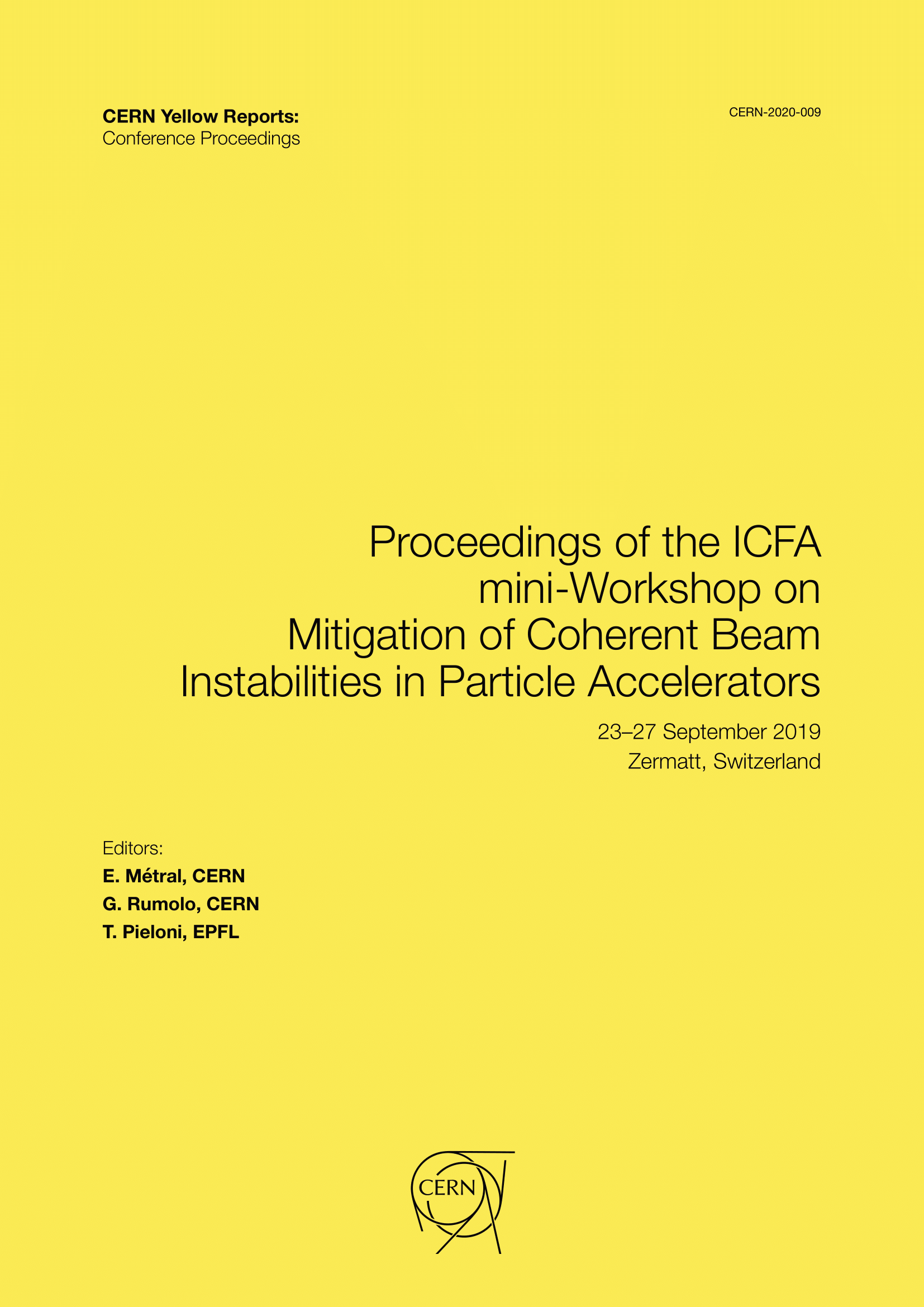Surface effects for electron cloud
DOI:
https://doi.org/10.23732/CYRCP-2020-009.186Abstract
The ability of a low secondary electron yield coating to mitigate detrimental electron cloud effects potentially affecting accelerators’ performances has been convincingly validated. The interference of such coatings with other properties required to accelerator constructive materials (i.e. vacuum compatibility, magnetic permeability, high surface conductivity, etc.) is of great concern and has recently attracted a lot of interest and studies. For instance, the severe impedance budget constraint requires the highest conductivity in the surface layers within the skin depth (typically some μm) characteristic of the e.m. interaction. It is therefore of uttermost importance to define the minimum thickness one overlayer should have in order to be an eective electron cloud mitigator and minimize its impact to surface conductivity.
To this purpose, XPS and secondary electron spectroscopy have been simultaneously applied to the prototypical system formed by increasing coverages of amorphous Carbon (a-C) deposited on atomically clean Cu. XPS has been successfully used to qualify and quantify the a-C thickness, rendering possible a detailed coverage dependent study. A significantly thin a-C layer, of about 5 to 7 nm, is surprisingly enough to lower the secondary emission properties of the whole system below 1. This observation opens up the possibility to develop, on industrial scale, thin enough electron cloud mitigators that will not affect impedance issues.
Downloads
Published
Issue
Section
License
Copyright (c) 2021 CERN

This work is licensed under a Creative Commons Attribution 4.0 International License.
Authors who publish with this publication agree to the following terms:
- CERN retains copyright and publishes the work licensed under the Creative Commons Attribution License 4.0 that allows others to share the work with an acknowledgement of the work's authorship and initial publication in this series.
- Authors are able to enter into separate, additional contractual arrangements for distribution of the published version of the work (e.g., post it to an institutional repository or publish it in a book), with an acknowledgement of its initial publication in this series.
- Authors are permitted and encouraged to post their work online (e.g., in institutional repositories or on their website) prior to and during the submission process, as it can lead to productive exchanges, as well as earlier and greater citation of published work (See The Effect of Open Access).

